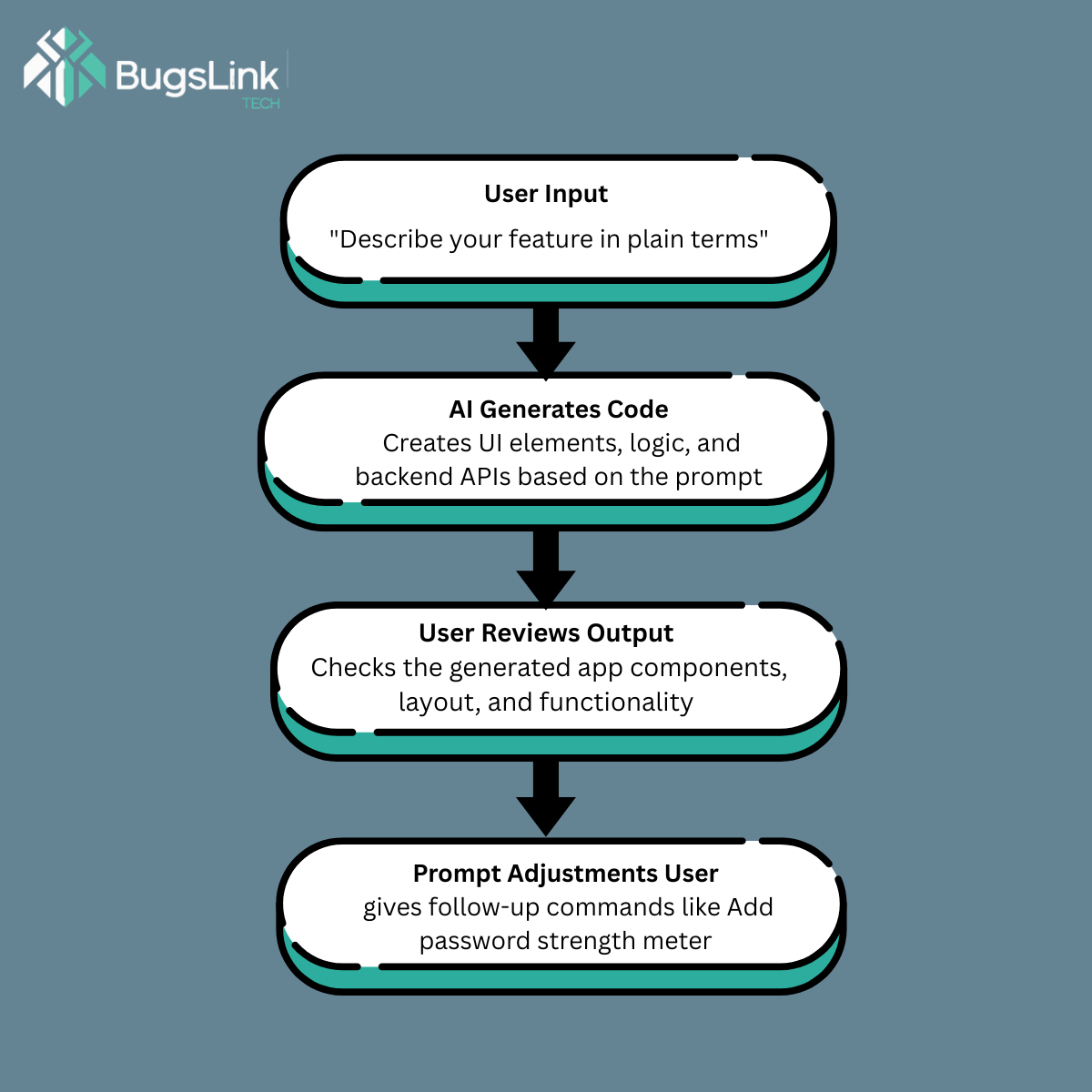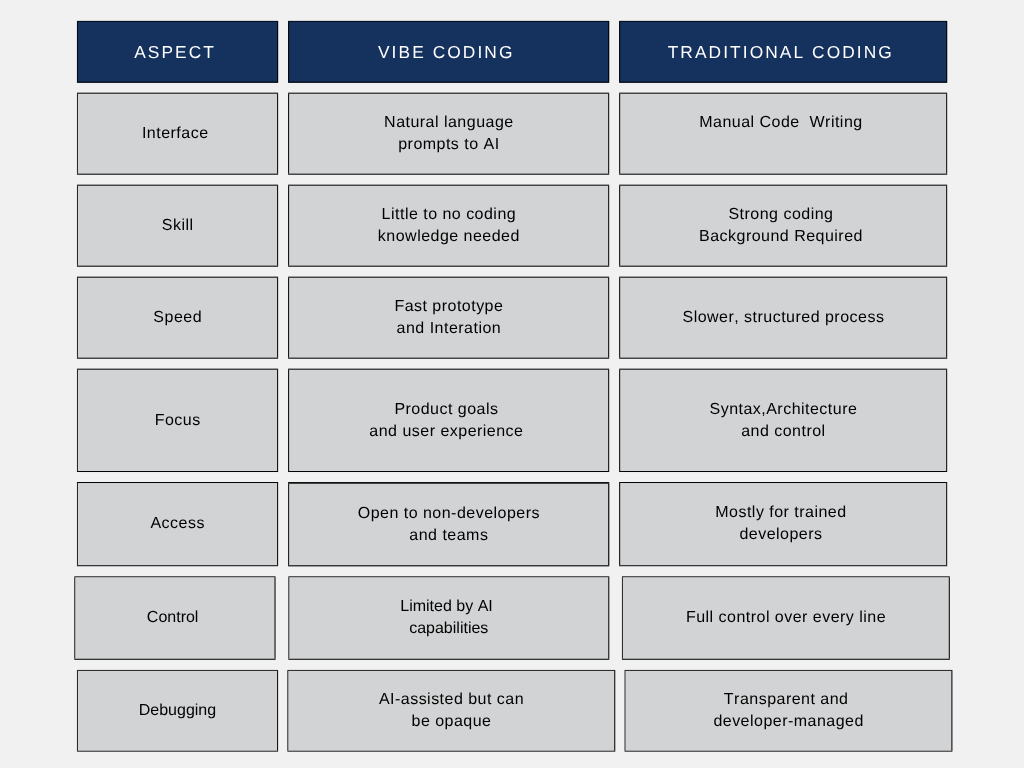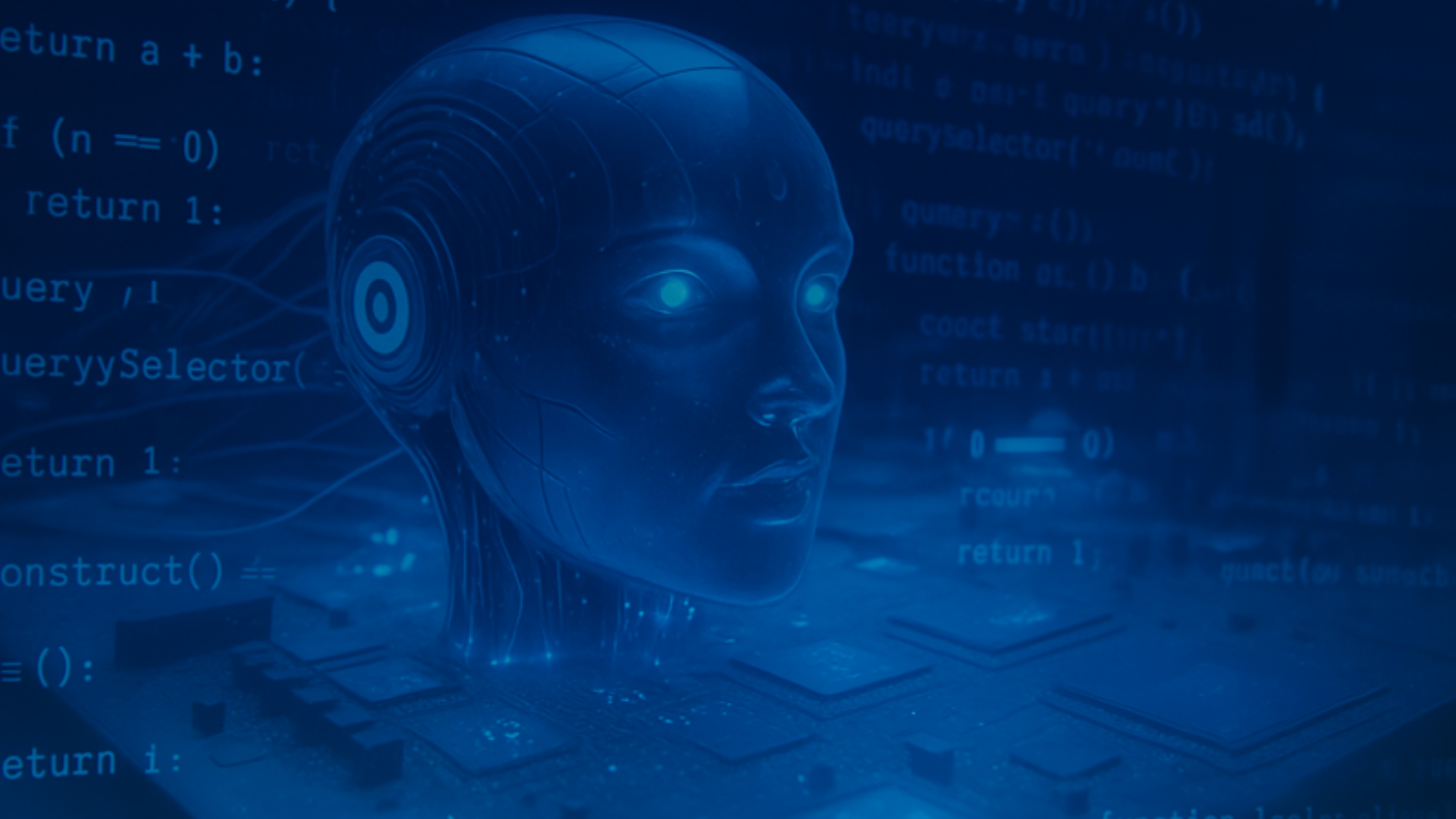Have you ever thought, “What if I could just describe an app and it appears, no tedious coding?” That’s the magic of vibe coding, a trending method where developers build software by simply expressing what they want, letting advanced AI do the heavy lifting.
In this blog, we’ll explore what vibe coding is and what it isn’t, how natural language is reshaping software development, the benefits and boundaries of this approach, and whether it’s just a buzzword or the future of how we build tech.
What Is Vibe Coding?
This type of coding is a revolutionary approach to software development where you describe your idea in plain English. For example, you might say, “Make a login form with a password strength meter,” and an AI model will build it for you. Instead of writing code line by line, you simply communicate your intent, and the system translates that intent into functional software components. Platforms like Glide, Max Libin’s experiments, and Coding with Vibe are already exploring the real potential of this method.
This reshapes the developer’s role in three main ways:
- Prompting: You begin by explaining your idea using plain language or structured instructions. No need to worry about syntax or boilerplate—just clarity of thought.
- Reviewing: The AI then generates layouts, logic, or complete features based on your input. Instead of diving into complex code, you evaluate and adjust what the AI produces.
- Iterating: If the results are not quite right, maybe a bug or a design mismatch, you can revise your input and quickly test new outputs. It creates a fast and flexible development loop.
Rather than eliminating the need for developers, it empowers them. It reduces repetitive work, encourages creative experimentation, and enables more people to take part in the software building process. It is not just a trend but a shift toward a more collaborative and accessible way of building digital products with the help of intelligent tools.
Why Vibe Coding Is Gaining Traction
Vibe coding is becoming increasingly popular because it accelerates development and empowers more people to participate in building software. With platforms like Rocket Farm Studios showcasing how AI tools cut dev time, and insights from AI Talks and Coding with Vibe, developers can now prototype functional features in hours instead of days.
It also promotes inclusive innovation. Designers and product thinkers no longer need deep programming skills to prototype apps or features, making it easier to bring diverse ideas to life.
By removing the burden of repetitive coding, vibe coding helps developers concentrate on user experience and product logic, not just syntax or boilerplate code.
The process is inherently iterative, speak your idea, watch it materialize, refine it on the spot, which makes it ideal for agile sprints and rapid experimentation.
How Vibe Coding Works

Vibe Coding Vs. Traditional Coding
Vibe coding is transforming the way software is built by simplifying the process. You can describe your idea in plain language, and the AI handles the technical details. This makes it easier and faster to build apps, especially for people who don’t come from a programming background.
However, this simplicity has its limits. Since much of the code is generated behind the scenes, it can be difficult to understand how everything works. That makes debugging more challenging, and for larger, more complex projects, you might need the kind of fine control that only traditional coding allows.

Benefits of Vibe Coding
1. Speed That Transforms Workflows
This Coding accelerates the development process dramatically. Compared to conventional coding methods, developers can build features up to 70% faster and finish 126% more projects per week. This rapid prototyping allows teams to innovate faster and stay ahead in competitive markets.
2. Accessibility for Everyone
It is transforming who gets to build software. Simplifying code generation, it enables non-coders like designers and product managers to prototype ideas without deep technical knowledge. This inclusive model fosters better collaboration and faster iterations.
3. Focus on Creativity and Experience
With boilerplate code out of the way, developers can focus on what matters: user experience, app logic, and continuous iteration. Vibe Coding lets creativity lead the way, enabling teams to deliver polished, user-centered products with less overhead.
4. Perfect for Testing and Exploration
This type of Coding is ideal for testing new ideas quickly, whether it’s during hackathons, internal demos, or exploratory phases. Teams can build and tweak MVPs in real time, thanks to its intuitive, feedback-driven structure.
Check out Vibe Coding in Prototyping with Hiraku AI for more.
Risks & Limitations
- Code quality concerns: AI can generate buggy or insecure code; stats say ~27% of snippets contain vulnerabilities.
- Lack of transparency: Accountability blurs when developers don’t fully understand the generated code.
- Not production-ready: Ideal for prototypes, not enterprise-grade systems .
- Team misalignment: When teams rely too heavily on AI, code readability and maintainability may suffer.
- Misleading simplicity: Experts like Andrew Ng warn that vibe coding trivializes coding, a deeply intellectual task
The Future of Vibe Coding
Emerging paths include:
- Accessibility boosts: AI-assisted coding for screen readers broadens inclusivity.
- Agentic vs Vibe: Academia explores combining Vibe’s natural interface with autonomous LLM agents for goal-driven development.
- Industry adoption: Tech firms like Visa, Reddit, and DoorDash now include this coding experience in job descriptions.
Conclusion
Vibe coding represents a pivotal shift in how we create software, bringing programming within reach of anyone who can describe an idea. This conversational, AI-powered method accelerates prototyping, fosters innovation, and empowers non-coders to participate in building applications.
However, experts caution that vibe coding on its own isn’t enough for long-term, secure, and maintainable systems. Former OpenAI research head Bob McGrew highlights the importance of human developers reviewing and refining AI-generated code before it enters production.
At BugsLink TECH, we’ve developed a balanced approach that brings together the speed of vibe coding and the precision of human engineering.
FAQs
What is vibe coding?
Vibe coding lets you describe features in plain language, like “create a login form”, and AI generates the corresponding code automatically.
Who benefits most from vibe coding?
It’s perfect for developers testing ideas quickly and non-developers (like designers or product managers) who want to prototype without coding skills.
What are the main risks of using vibe coding?
AI-generated code may be buggy or insecure, lack transparency, and not be optimal for complex, production-grade projects.

